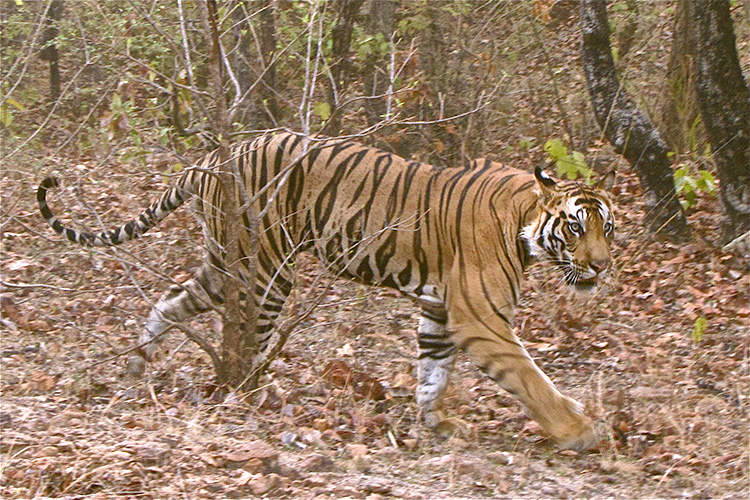Controversy Erupts as RSS Advocates for ‘Unified’ Conservation: Save Tiger vs. Save Cow

Controversy Erupts as RSS Advocates for ‘Unified’ Conservation: Save Tiger vs. Save Cow
In a recent statement, RSS (Rashtriya Swayamsevak Sangh) publicity in-charge, Sunil Ambekar, has sparked a contentious debate by challenging the perception that conservation efforts in India are divided along communal lines. Ambekar’s assertion that “Save tiger and save birds is secular, but save cow is communal” has ignited a fierce discussion about the role of cultural and historical factors in conservation initiatives within the country.
Ambekar’s argument revolves around what he terms “confused and colonized” mindsets that differentiate between the preservation of various species. He contends that calling for the protection of tigers, birds, and other wildlife is deemed “secular” and widely accepted by society. However, when it comes to advocating for the safeguarding of cows, it is often labeled as “communal,” evoking criticism and controversy.
The controversy stems from the complex historical and cultural dynamics of India, where the cow holds a revered position in Hinduism and other religious traditions. This sacred status has led to calls for cow protection by certain groups and individuals, often associated with Hindu nationalism. Such movements have sometimes been criticized for their exclusivity and potential to marginalize other communities.
Ambekar’s comparison between conservation efforts for tigers and cows underscores his belief that the distinction is unwarranted. He questions why saving the tiger, a majestic and endangered species, is considered a secular and noble cause, while saving the cow, an animal of immense cultural significance, is often painted as divisive and communal. This perspective challenges the conventional narrative and raises pertinent questions about the underlying biases in public discourse.

Furthermore, Ambekar delves into the debate over renaming cities and removing symbols associated with the British Raj and Mughal invaders. He argues that the removal of symbols from the British colonial era is widely accepted as a step towards reclaiming India’s cultural identity. However, he questions why similar actions taken against symbols of the Mughal era are met with resistance and accusations of being communal. This point highlights the nuances and sensitivities surrounding historical legacies in the Indian context.
The controversy surrounding Ambekar’s statement reflects the ongoing struggle to strike a balance between cultural heritage, religious sentiments, and conservation efforts in India. While the protection of tigers and other wildlife is seen as a secular cause with global relevance, the cow’s sacred status has made its conservation a topic of contention.
Critics argue that the issue lies not in the act of cow protection itself but in the often divisive and exclusionary rhetoric that accompanies it. They assert that some cow protection movements have been associated with acts of violence and intimidation against minority communities, which has fueled the perception of communalism.
Conversely, proponents of cow protection emphasize the need to safeguard an animal that holds immense significance in India’s cultural and religious tapestry. They argue that protecting cows is not an inherently divisive endeavor and should be viewed through a more inclusive lens that respects diverse beliefs and practices.
The debate surrounding conservation efforts in India goes beyond the immediate question of whether saving cows can be perceived as communal. It highlights the broader challenges faced by the country in reconciling its diverse cultural and religious heritage with contemporary environmental concerns. India, with its multifaceted identity, has often grappled with finding common ground on issues that intersect with tradition, faith, and modernity.

In recent years, there have been efforts to bridge the gap between conservation and cultural preservation. Some initiatives have sought to promote sustainable practices within the context of religious beliefs. For instance, organizations have encouraged the adoption of modern and humane techniques for dairy farming while still respecting the sacred status of cows. These efforts aim to demonstrate that conservation and cultural values can coexist harmoniously.
Additionally, it is essential to recognize that conservation is not limited to a single species or issue. India is a country rich in biodiversity, and preserving its natural heritage requires a multifaceted approach. Protecting tigers and other endangered species remains a significant priority, but it should not overshadow the importance of addressing other environmental challenges, such as deforestation, pollution, and habitat destruction. India’s conservation efforts need to encompass a wide spectrum of species and ecosystems.
In the end, the controversy raised by Sunil Ambekar’s statement serves as a reminder of the complexity of conservation in a culturally diverse nation like India. It underscores the need for nuanced and inclusive approaches that respect both the environment and the deeply ingrained beliefs of its people. Balancing these interests is a formidable task, but it is one that India must undertake as it seeks to protect its natural wonders while celebrating its diverse cultural tapestry.

In conclusion, Sunil Ambekar’s assertion that “Save tiger and save birds is secular, but save cow is communal” has ignited a fierce debate about conservation efforts in India. This controversy exposes the complex interplay between cultural heritage, religious sentiments, and environmental conservation. While the country strives to protect its rich biodiversity, it must navigate the delicate balance between safeguarding cherished traditions and promoting unity in diversity. The resolution of this issue may well shape the future of conservation and cultural discourse in India.




